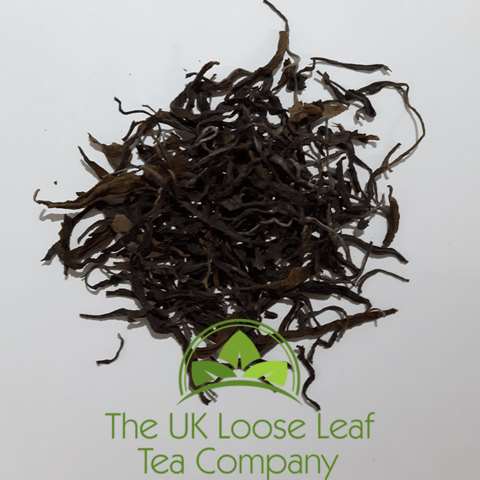
Raw Pu Erh Tea ~ Sheng Pu Erh

Raw Pu Erh Tea
Picked and produced in Menghai County, Xishuangbanna, Yunnan Province.
Our Raw Pu Erh Tea aged overtime where it goes through a slow oxidation process. It has a strong bright earthy taste which becomes sweeter as the infusions increase.
There are two variations of Pu Erh tea: Sheng Pu Erh (the raw or green type) and Shou Pu Erh (the ripe or black type).
Both Ripe Pu Erh and Raw Pu Erh teas are made from a sun-dried tea called Saiqing Mao Cha. After fermentation and roasting, pu erh tea is aged, often for many years, resulting in its dark colour and bold, mellow flavour.
This tea can only be produced and fermented in southern Yunnan Province using sun-dried green tea from specific tea varieties found in Yunnan, Laos, Burma and some parts of Thailand and Vietnam.
Raw (Sheng) Pu Erh is a pu erh that is made from non-fermented green tea leaves that were picked, quickly roasted, sun-dried and then steamed to be compressed into round disks called cakes. After which the cakes are aged until the tea’s taste is properly transformed. Our tea misses this out and is offered as a large leaf tea.
Because raw pu erh doesn’t go through the piling process, it retains a fresh scent as well as a little bit of astringency, with a sweet aftertaste.
Ripe (Shou) Pu Erh is pu erh that is made from black tea – the one that is oxidized. At first, shou pu erh goes through the exact same steps as the sheng pu erh. However, at the stage of producing the cakes it undergoes the following procedure, called ‘wet piling’:
- The leaves get piled up to a certain height that is usually around 70 cm, but different tea masters have their own preferences.
- The piled tea gets dampened with water, and then covered by a linen cloth. This step allows the tea to stay warm and creates a humid environment to accelerate the fermentation.
- A special bacteria is added to further ferment the tea leaves, this often leaves a fishy smell when young but dissipates as the tea matures. You can leave your tea open in a dry place to speed this up.
- After the tea ferments to a certain degree, the leaves are opened up and ventilated.
- Most believe that shou shouldn't be aged any longer than 10 years, because it generally wouldn't benefit the flavour, but only raise the price of such pu erh.
Depending on the degree of such fermentation, pu erh turns from green or yellow to a reddish-brown colour. You can tell the degree of wet piling by the colour of the liquid – the darker the liquid gets, the higher the wet piling degree, and vice versa.
